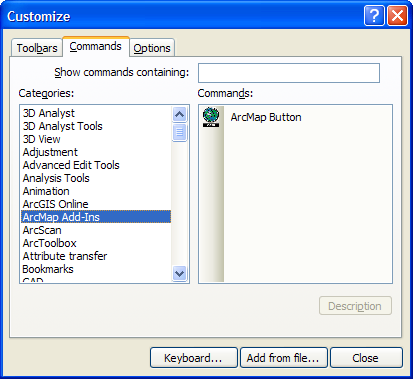

- Drag the command manager by the tabs to undock it for free#
- Drag the command manager by the tabs to undock it windows#
If you are looking for free File Explorer alternatives, there are plenty to choose from like File Voyager, File Commander, Files, Sigma, to name a few. Don't let that stop you from trying it out. The Tabs in File Explorer seems pretty basic now, but considering that it is an unannounced feature which is probably still being tested internally, that is perfectly understandable. You can close tabs by clicking the X button, or by using the middle-mouse button while the cursor is above a tab. Ctrl + C, Ctrl + X, Ctrl + V, to move your data around directories that you opened using Tabs. However, the regular file operations such as cut, copy, paste options are supported, so you can use the shell-menu or the hotkeys e.g. That and the fact that you can't copy or move files by dragging and dropping them between tabs. The biggest limitation of the tab bar is that it does not allow you to rearrange the tabs. The new Tab bar in File Explorer does not have a right click menu, hopefully that will arrive in a future update. All tabs function like a regular Explorer window, so you can use them to view any folder, and perform the usual actions. Click the + menu to open a new tab, and Explorer should immediately jump to the new tab that you opened. The design of File Explorer's tab bar resembles a browser's tab bar, aka the one in Microsoft Edge. To undo the changes, use the delconfig command in vivetool.Ĭredit: Xeno for the tip. Open File Explorer and you should see the Tab bar at the top of its interface. Restart the computer to apply the changes.ĥ. Note: If that command doesn't work, try adding. But the introduction of Tabs in File Explorer could make a huge difference in the way users manage their files and folders.
Drag the command manager by the tabs to undock it windows#
Using Snap Assist in Windows 11 also makes things easier. To Dock the Ribbon in a New Location If it is not undocked, undock the ribbon Click the title bar and drag the undocked ribbon to either the left edge, right edge, or top of the drawing area When the outline of the window is displayed in the docking area, release the button Note: To return the ribbon to its previous location. The only way to work around the multitasking limitations in the program, is to open new instances, and use them to transfer files from one folder or drive to another. To Undock the Ribbon Right-click the ribbon tabs and select undock. There have been minor changes to the menu in Explorer, but that doesn't really change the overall experience. Surely, File Explorer deserves similar treatment, right? Notepad, for example, was recently updated with modern features, and we have seen Task Manager get a new interface. Despite its popularity, the app barely has any features in terms of multitasking. The built-in file manager that ships with Windows, is perhaps one of the most used tools in the operating system. Let's hope that it fares better than Sets. But there was something else too, a change that went unannounced in the official change log, Tabs in File Explorer. It brought a couple of additional default apps. Windows 11 Build 22572 was released to the Insider Preview Program yesterday.


 0 kommentar(er)
0 kommentar(er)
